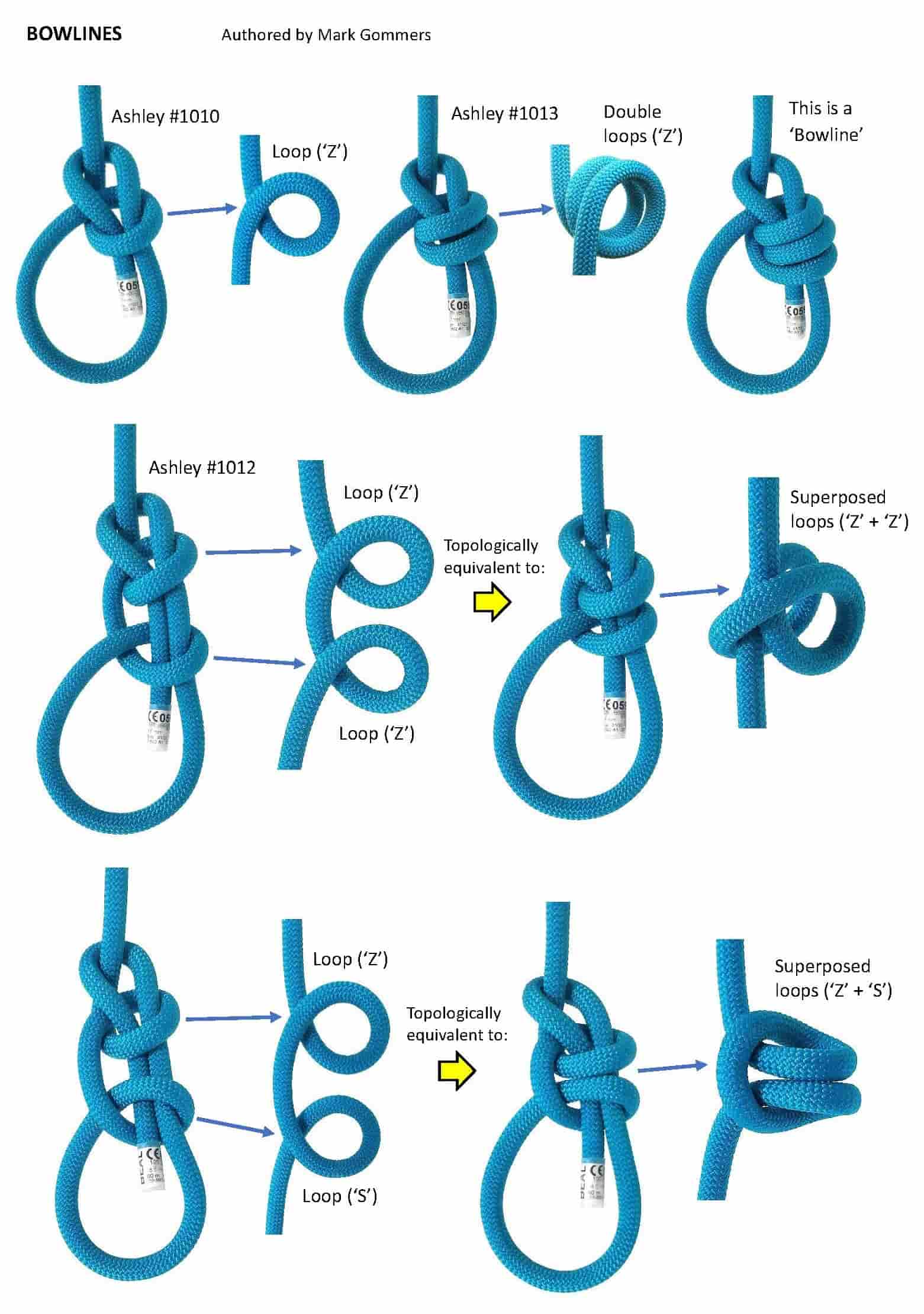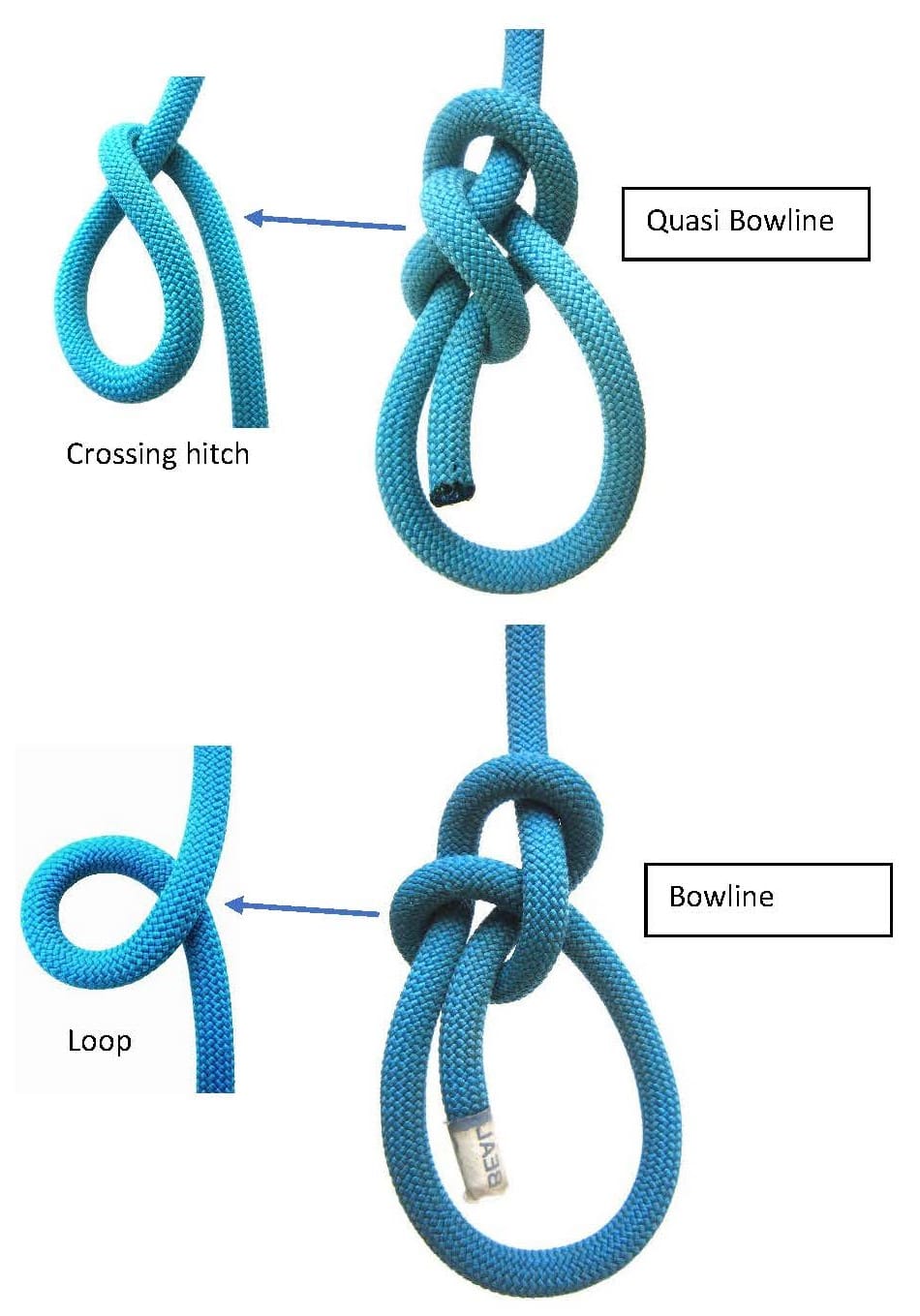I will just repeat that I [b]feel [/b]that the expression "nipping loop" implies a single loop.Obviously I dont know you on a personal level and we have never met. I am proceeding on the assumption that English is your first language (keep in mind that many people on this forum do not speak English as a first language). You use the word "feel". I have to state up front that [u]facts don't care about feelings[/u]. Your interpretation is false. The definition is not restricted to the existence of only one (1) loop. Logically, if there are two (2) loops, this implies there must be at least one (1) loop present. So for example, Ashley #1013 is a Bowline with 2 loops. It is still a 'Bowline' - and it has more than one loop (ie it has 2 loops). Singular versus plural is irrelevant.
I do not see how it allows a Clove Hitch, a Round Turn, or a Girth Hitch (none of which meets the definition you give for a "loop").False. [u]Refer to attached image below.[/u] A Clove hitch actually consists of 2 superposed loops of the [i]same [/i]chirality. Do you acknowledge this as a fact? Yes / No ?
A Girth hitch actually consists of 2 superposed loops of opposite chirality.
Do you acknowledge this as a fact? Yes / No ?
I want all of these to be included into the "family of bowlines" and so I am trying to argue for the definition to say "nipping part" or "nipping structure"...Your argument makes no sense, it is illogical. All 'Bowlines' that have ever been published since the dawn of mankind have certain geometric characteristics. You can objectively test this yourself. Take some time, and examine 'Bowlines' published by Ashley, CL Day, Budworth, et al. You will notice some geometric elements that are common to all 'Bowlines'. The only exception is the anomaly found in Ashley at illustrations #1057 and #1058. I am of the view that this was a [i]logic error[/i] (likely caused by following some previous publication or historical artefact - or an editing error). I could also mention the so-called 'circus Bowline' (which isn't a Bowline - its actually the [u]Farmers loop[/u]).
I don't think the Girth Hitch has the structure of a helix or that it is very circularized.Why is the concept of a [i]helix [/i]necessary? Although I concede that a 'loop' is the beginning of a helical structure (and has the elementary shape of a helix). And so it is a useful term to explain what a 'loop' is. In Ashley #1013, there is a double loop. I say "double loop" rather than 2 superposed loops. We can say that the double loop in Ashley #1013 has the form of a helix. But, this misses the key point:- it is the presence of a [i]loop [/i](or more than 1 loop) that matters. It just happens to be that a double loop has the form of a helix.
The Karash structure is just a half-twisted loop that seems almost closer to the original Bowline than a Girth Hitch Bowline. I would like the definition to include all of theseThe so called 'Karash' eye knot [u]is actually a quasi Bowline[/u] (refer to attached image below). I use and interpret the term 'quasi' as per the standard English dictionary. Definition: [i]Used to show that something [u]is almost, but not completely, the thing described[/u].[/i] This is an example of a nipping structure (rather than a nipping loop). In this case, the nipping structure is a [i]crossing hitch[/i] (same form as #206 Munter hitch). And so here, the term 'nipping structure' is appropriate.
And again, your epistemological understanding of what a loop is requires investigation.
A ‘Girth hitch’ is topologically just 2 superposed loops of opposite chirality.
Do you not see this?
And a Clove hitch is topologically just 2 superposed loops of the same chirality.
Both consist of loops.
What differs is how they are geometrically aligned with respect to each other.

